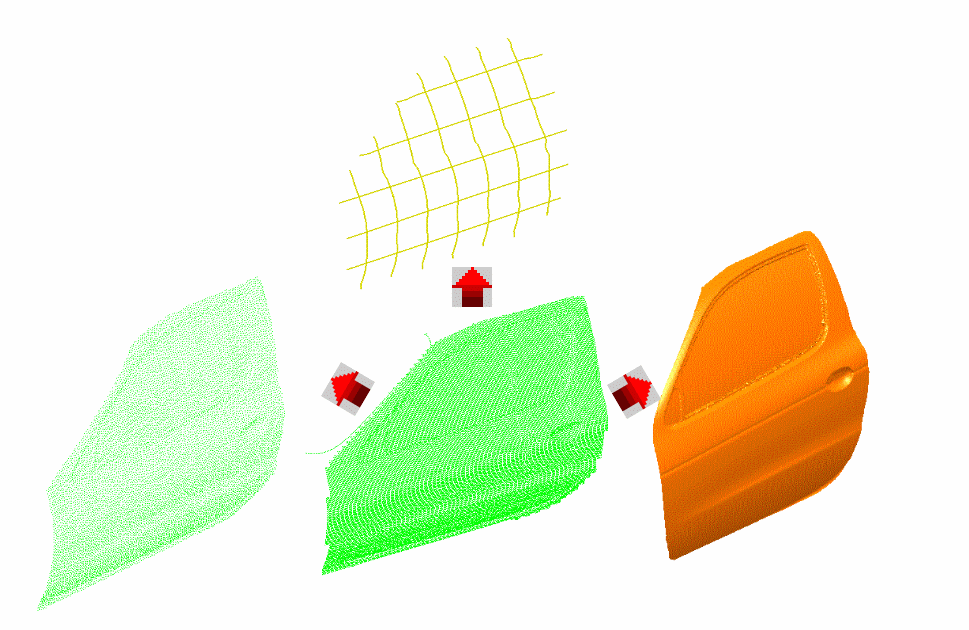This guide is intended for users who need to become quickly familiar with the product.
This overview provides the following information:
Digitized Shape Editor in a Nutshell
Digitized Shape Editor:
- proposes several import formats,
- takes special characteristics of imported shapes into account (free edges, facets, ...), if requested,
- ensures a fast processing of clouds (that may contain several millions of points) through filtering, activation and removal functions,
- makes the manipulations of the various elements constituting cloud of points (points, scans, grids, meshes) easy,
- provides edition functions such as merging and aligning of clouds, or creation of planar sections,
- provides display and analysis functions of the cloud,
- keeps the architecture of objects processed,
- provides tessellations to be used directly with other applications or for visualization,
- exports the models created to several formats.
The Digitized Shape Editor user's guide has been designed to show you how to import and edit digitized parts using these powerful tools.
Before Reading this Guide
Prior to reading the Digitized Shape Editor User's Guide, you are recommended to have a look at the Infrastructure User's Guide for information on the generic capabilities common to all products.
Getting the Most Out of this Guide
